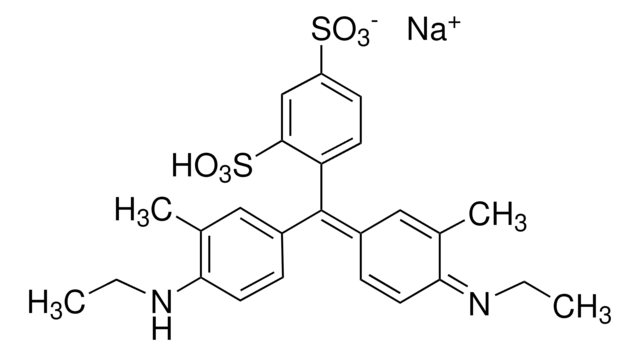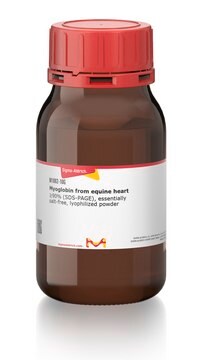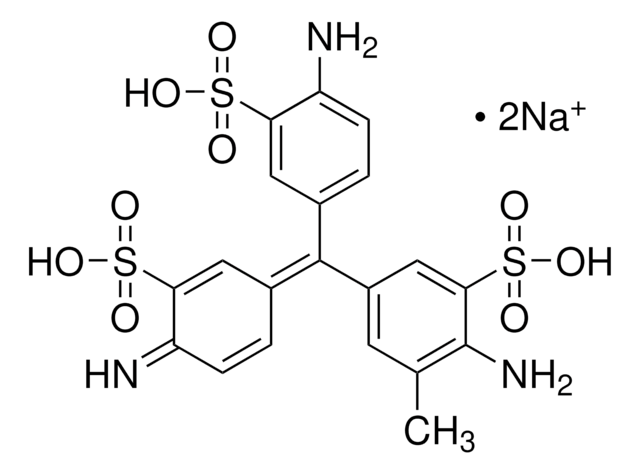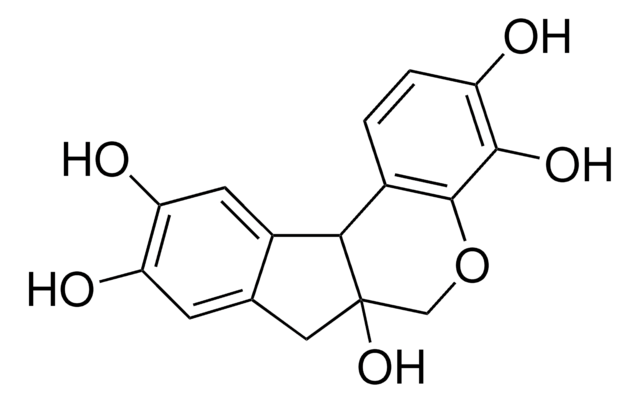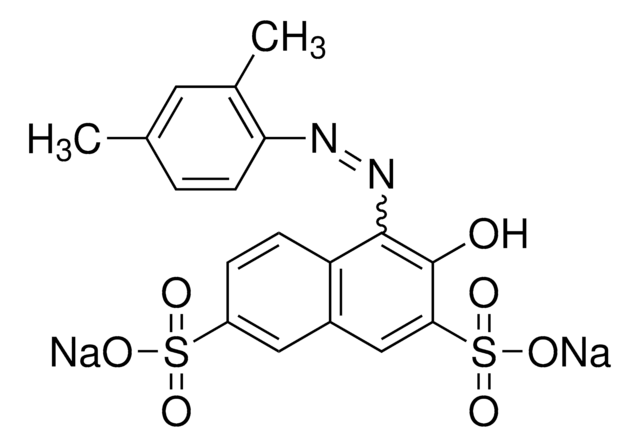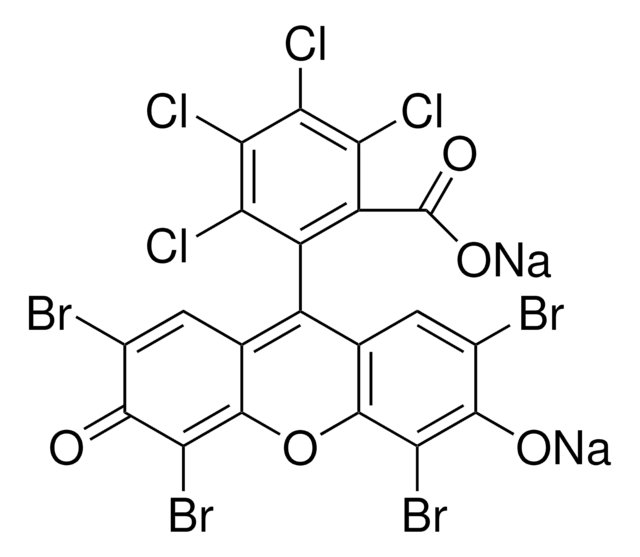O7252
オレンジG
certified by the Biological Stain Commission
別名:
1-フェニルアゾ-2-ナフトール-6,8-ジスルホン酸 二ナトリウム塩, 7-ヒドロキシ-8-フェニルアゾ-1,3-ナフタレンジスルホン酸 二ナトリウム塩, アシッドオレンジ10, ウールオレンジ2G
About This Item
おすすめの製品
グレード
certified by the Biological Stain Commission
品質水準
形状
powder
組成
Dye content, ≥80%
色
orange to very dark orange
溶解性
water: 1 mg/mL, clear
アプリケーション
diagnostic assay manufacturing
hematology
histology
保管温度
room temp
SMILES記法
[Na+].[Na+].Oc1ccc2cc(cc(c2c1\N=N\c3ccccc3)S([O-])(=O)=O)S([O-])(=O)=O
InChI
1S/C16H12N2O7S2.2Na/c19-13-7-6-10-8-12(26(20,21)22)9-14(27(23,24)25)15(10)16(13)18-17-11-4-2-1-3-5-11;;/h1-9,19H,(H,20,21,22)(H,23,24,25);;/q;2*+1/p-2/b18-17+;;
InChI Key
HSXUHWZMNJHFRV-QIKYXUGXSA-L
類似した製品をお探しですか? 訪問 製品比較ガイド
詳細
アプリケーション
適合性
保管分類コード
11 - Combustible Solids
WGK
WGK 3
引火点(°F)
Not applicable
引火点(℃)
Not applicable
個人用保護具 (PPE)
Eyeshields, Gloves, type N95 (US)
試験成績書(COA)
製品のロット番号・バッチ番号を入力して、試験成績書(COA) を検索できます。ロット番号・バッチ番号は、製品ラベルに「Lot」または「Batch」に続いて記載されています。
この製品を見ている人はこちらもチェック
ライフサイエンス、有機合成、材料科学、クロマトグラフィー、分析など、あらゆる分野の研究に経験のあるメンバーがおります。.
製品に関するお問い合わせはこちら(テクニカルサービス)

